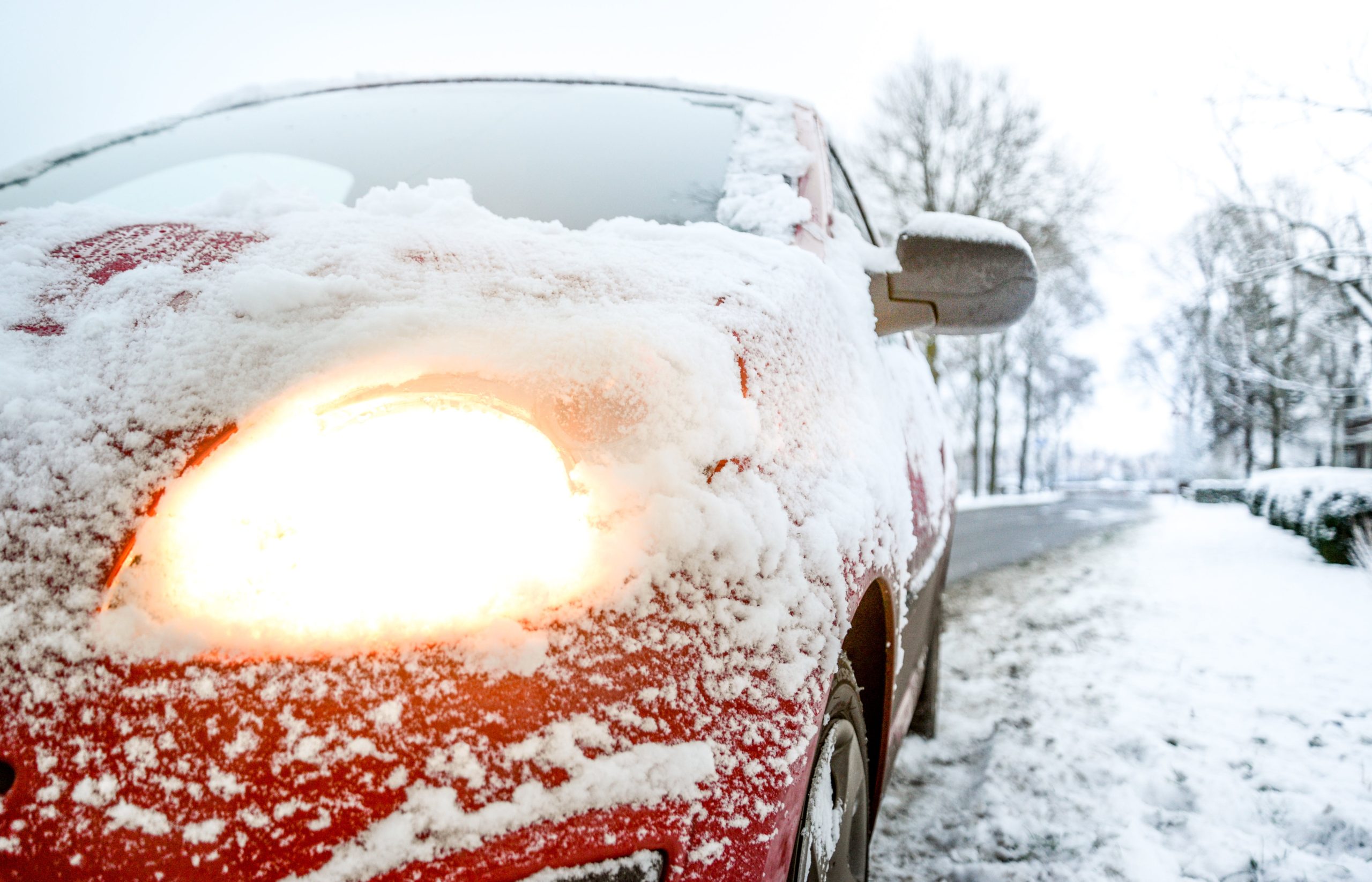Don’t get caught off guard this winter. Use this checklist as a guide to prepare your vehicle for the cold weather and assemble your roadside survival kit.
Vehicle maintenance
- Follow your vehicle manufacturer’s scheduled maintenance recommendations.
- Talk to your mechanic about winterizing your vehicle. Many auto shops will list what’s included in a winterization package, but ask if you’re unsure.
- Check the fluid levels (oil, brake, power steering, antifreeze and windshield washer).
- Check the engine hoses and connections for wear, tear, kinks, bulges and punctures. (Soft rubber hoses can harden and break over time. If they’re showing signs of degradation, replace them.)
- Inspect the spark plugs, especially if your vehicle struggles to start or idles rough.
- Install winter windshield wipers. (Winter wiper blades are made of sturdier, freeze-resistant rubber for moving heavy snow. They’re not recommended for year-round use, though, so swap them out in the spring.)
- Inspect the braking system and rotors.
- Check the battery connections and charge levels. Even if you have a newer battery, batteries can lose power based on driving habits, faulty or corroded connectors, or extreme weather conditions.
- Check engine and cabin air filters, especially if you do a lot of driving on unpaved streets or in polluted areas.
- Check the defrost functionality on the front and back windshields.
- Check the exterior and interior lights.
- Check the spare tire and make sure it’s functional and inflated. (Make sure you have a car jack and extra lug nuts, too.)
- Inspect your jumper cables for wear, including frayed wires or loose connections.
- Rotate the tires.
- Ask your mechanic or tire dealer about ordering snow tires so you’ll get them before bad weather strikes. Many tire dealers offer tire storage options in case you don’t have space at home to store seasonal tires.
- Purchase snow chains before the snow falls and learn how to install them. Chains can get tricky, so talk to your mechanic if you’re not sure how to secure them.
- Mount snow tires if you drive in frigid conditions. (Snow tires have unique and deep tread patterns, and some even come with studs. They’re also made of softer rubber, which creates better traction for gripping in cold temperatures. All-weather tires, on the other hand, use a different kind of rubber that can harden at low temperatures, causing the vehicle to lose traction and skid easily.)
- Maintain proper tire pressure.
- Familiarize yourself with the appropriate pounds per square inch (psi) range for your vehicle (located on the driver’s side doorjamb decal or listed in the owner’s manual; usually 32 to 35 psi).
- Invest in a tire pressure gauge and check tire pressure before driving, when the vehicle is cold.
- Never ignore an illuminated tire pressure alert on your car dash. Tires can lose 1 psi every month under normal driving conditions and even more when it’s cold out and air compresses. When the tire pressure dips too low, the tire can pull away from the rim, causing a flat or blowout.
- Get in the habit of checking regularly, at least once a month.
- Keep the gas tank at least half full during cold snaps, especially if you park your car outdoors. Gasoline freezes at minus 73 Celsius, but water vapour could build up and freeze in the gas line, causing a fuel blockage.
Create a roadside safety kit
You might have less trunk space after adding a safety kit, but being well-prepared for a roadside wait is worth it. Customize your safety kit with things like:
- An ice scraper and snow brush
- Glow sticks (so other drivers can see you walking along dark roadways)
- A flashlight
- Flares or reflective triangles (to create a visual barrier around your car)
- Survival candles or canned candles (They can generate a surprising amount of heat.)
- A lighter or matches
- A loud whistle (to draw attention to yourself)
- A hand-crank emergency radio (Look for options that include a phone charger, USB outlet and light.)
- An extra phone charger cable
- Nonperishable, high-energy foods (protein or granola bars, canned nuts, dried fruit, hard candy, beef jerky)
- Water (swap out the supply every six months for freshness) or water purification tablets (in case you have to scrounge for a water source)
- Bandages
- A tourniquet and splint
- Antiseptic wipes
- Antibiotic cream
- Clean rags or paper towels
- Duct tape
- Scissors or a multitool
- Extra oil, antifreeze and windshield wiper fluid
- Engine repair tools
- A portable battery jump-starter (Look for one with chargers, lights, air compressors and other options for an all-in-one solution that replaces a few items on this list.)
- A tire patch kit (Be careful when selecting your kit. Some work by filling the tire with foam, which might ruin the tire, but they’ll get you rolling again.)
- A collapsible snow shovel (to dig yourself out of a snowbank)
- A bag of sand, nonclumping cat litter, mats or flattened cardboard (to create traction under car wheels)
- Extra winter clothing (Old coats or mismatched mittens will do. There are no fashion judgments when you’re stranded.)
- A blanket or sleeping bag
- A Mylar or emergency blanket (best used in conjunction with an actual blanket for maximum heat retention)
Winter driving classes
Winter driving classes can teach you skills like how to handle a spinout and braking techniques for all-wheel-drive versus front-wheel-drive systems. Consider enrolling in a winter driving class, especially if you purchased a new vehicle, recently got your driver’s licence or moved from a warm climate.
If you have any questions about your auto policy (like adding that roadside assistance plan) to make sure your coverage is buttoned up this season, call us at 905-688-9170. Stay safe out there!



